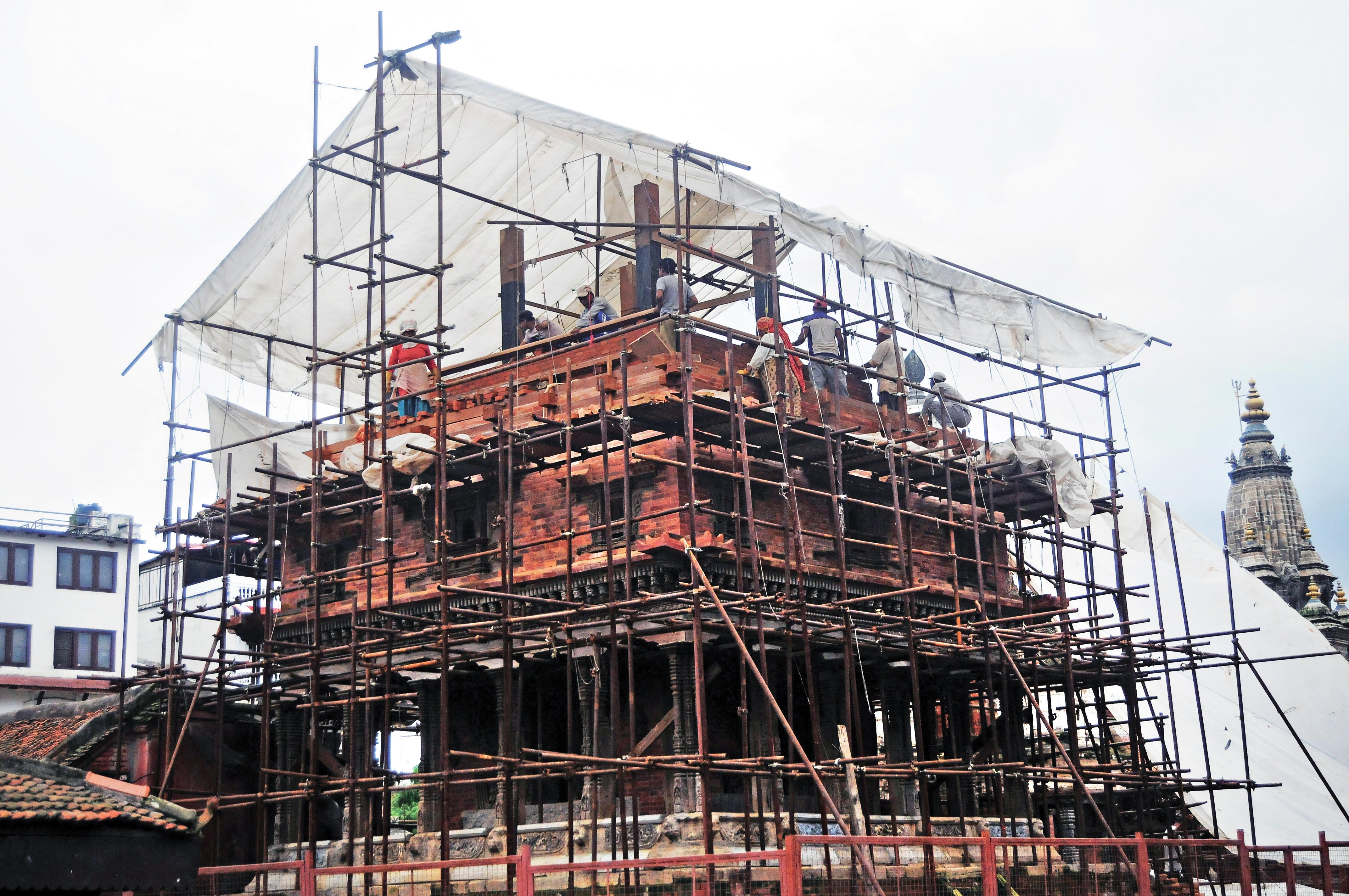Pace of reconstruction taking forever to pick up
Kathmandu, April 24
As the country marks the fourth anniversary of 2015 Gorkha earthquake tomorrow, the tremors felt today may have compelled many to mull over the pace of recovery and Nepal’s preparedness for such disasters in the future.
Going by the statistics of National Reconstruction Authority, more than 50 per cent of identified beneficiaries for the housing grant (Rs 350,000) are yet to take all three tranches of the grant. This means that half the houses damaged by the earthquake in 2015 are yet to be reconstructed, even as NRA claims to have made 80 per cent progress in the reconstruction of houses, claiming that the other 30 per cent of damaged houses are being reconstructed.
Achievements made in the country in terms of rebuilding individual houses over the period of four years is quite sluggish compared to the progress achieved in reconstruction by India following the 2001 Bhuj earthquake and by Pakistan after the 2005 earthquake in Pakistan-occupied Kashmir. Both the countries were able to completely rebuild almost 80 per cent of quake-damaged houses by the end of four years.
NRA claims to have achieved 66 per cent progress in the reconstruction of health institutions damaged by the earthquakes. However, if the ongoing reconstruction of health institutions is not considered, only 54 per cent, or 643 health institutions out of 1,197, that need to be rebuilt have been completely reconstructed in the past four years.
In terms of reconstruction of heritage sites of archaeological importance in 11 most affected districts, 59 per cent progress has been made, including ongoing reconstruction. However, only 224 or 30 per cent of 753 monuments that have been reconstructed completely so far.
Undoubtedly, recovery from any extreme disaster is a lengthy process. However, assurance of local resilience, adequate funding, effective governance and a host of other factors are necessary to ensure that the post-disaster recovery is smooth and completed as soon as possible.
So, what is holding back Nepal’s post-quake reconstruction drive? How long will it take to complete rebuilding all the quake-damaged structures?
Sushil Gyewali, chief executive officer of NRA, states cash crunch is the major factor affecting the ongoing post-quake reconstruction drive.
Though Gyewali is quick to point that post-earthquake reconstruction activities have been accelerated recently, he mentioned, “The reconstruction process ahead depends on proper financial management, as NRA is facing budget deficit. We roughly need additional Rs 429 billion to complete reconstruction of structures devastated by the earthquakes.”
As identified by the Post Disaster Needs Assessment report of the government, the country requires a total of Rs 938 billion for the five-year reconstruction and rehabilitation plan. This funding gap should be addressed by raising yearly allocation of budget and through loans and grants assistance from donors sooner, Gyewali opines.
Meanwhile, on the preparedness front of disasters, the government claims that necessary policies have been formulated in a bid to ensure effective rescue and rehabilitation mechanism.
“We have prepared necessary policies and guidelines to cope with post-disaster situations while a few other disaster-related policies are being made contextual,” said Indu Ghimire, chief of Disaster Management Division at the Ministry of Home Affairs.
However, it remains to be seen how effectively those policies are implemented.
READ ALSO:






